South America is a unique continent in the southern and western hemispheres consisting of 12 countries and 434,254,119 people.
It stretches roughly 4,700 miles from Punta Gallinas and Brazil at its northernmost point down to Cape Horn and southern Chile‘s Tierra del Fuego archipelago.
South America is home to the ancient Andes mountain range, archeological sites such as the Nazca Lines or Machu Picchu in Peru, and Brazilian rainforests.
Unfortunately, the beautiful and cultured continent has gained a dangerous reputation, with certain countries and cities notorious for political unrest, crime, and violence.
While the World murder/homicide rate for 2020 was 5.61, a 0.74% increase from 2019, South America’s average rate saw over a 4% increase to 22%.
Brazil ranks near the top of the homicide list, with three other countries, Colombia, Venezuela, and Argentina.
Research is essential for traveling to South America, as some cities may require extra caution.
Contents
10 Most Dangerous Cities in South America
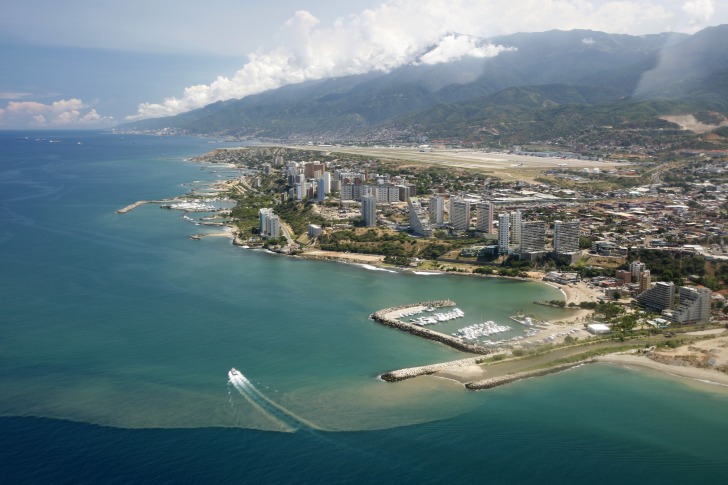
1. Caracas, Venezuela
Caracas, the capital of Venezuela, is renowned for its dangerous barrios, including the no-go area of Petare, where assaults, kidnappings, and murders are commonplace.
Politically unstable, Caracas has one of the highest crime rates in the world, with a danger score of 84 or 40.4 homicides per 100,000 people.
However, the smaller business districts of Altamira and Chacao, the capital’s most cosmopolitan and gentrified areas, are considered safe.
These enclaves hold gleaming high-rise buildings, restaurants, and high-end shopping.
Chacao is also home to an urban park, Parque del Este.
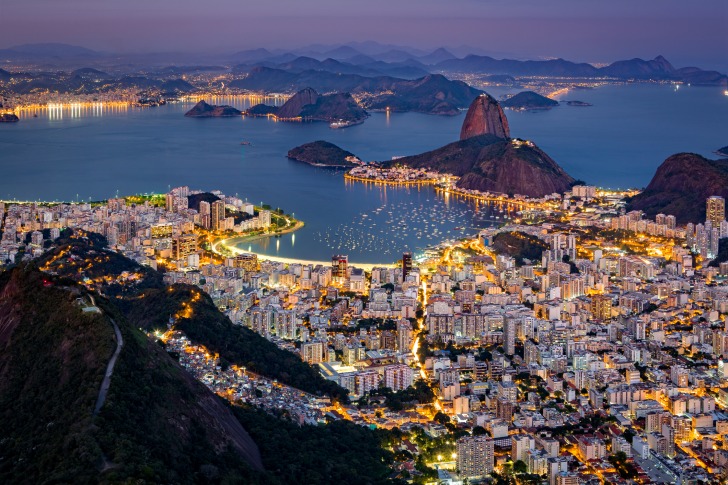
2. Rio de Janeiro, Brazil
The wildly popular Rio de Janeiro, with a danger score of 77.5, is a surprising inclusion. Its ranking is due to the higher rate of murders, assaults, and theft found in the Favelas and Centro.
The murder rate rose 4% in 2020, reaching 23.6 per 100,000 people.
It is also suggested that new gun ownership laws have played a part in the recent rise in murders and assaults.
There are now nearly 1.3 million guns registered to private owners.
Another ongoing crime issue is robbery.
The beaches of Rio de Janeiro at night are questionable and should be avoided.
The good thing is that there are safe areas in Rio de Janeiro. Ipanema and Botafogo are among the safest.
And with a little common sense, travelers can enjoy the vibrant colors and cultural flare of Rio de Janeiro year round.
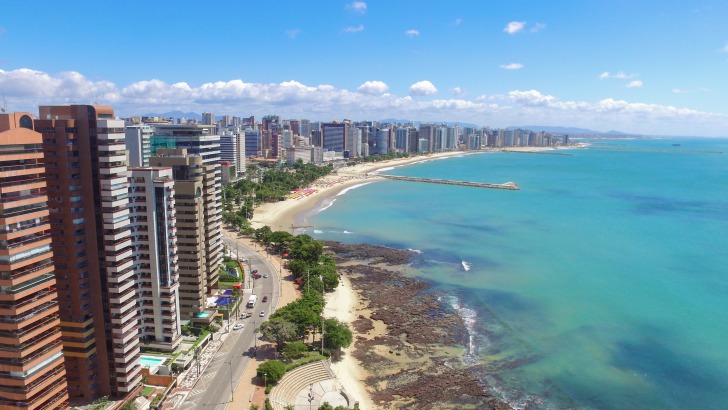
3. Fortaleza, Brazil
Fortaleza, with a resident population of 2.7 million, is the capital of the northeastern Brazilian city-state of Ceará.
This popular tourist destination is valued for its red cliff-lined beaches, palm trees, and lagoons.
Unfortunately, a high crime rate is a factor, including violent crimes like homicides and robberies.
These incidents are fueled by gang violence, murder, assault, and kidnapping.
Fortaleza’s danger score is 77.36, with 22.5 violent crimes per 100,000 people.
Like Rio de Janeiro, the beaches at night are often the most dangerous.
According to World crime data, Praia de Iracema is the safest part of Fortaleza, but be extra cautious at night or when traveling alone.
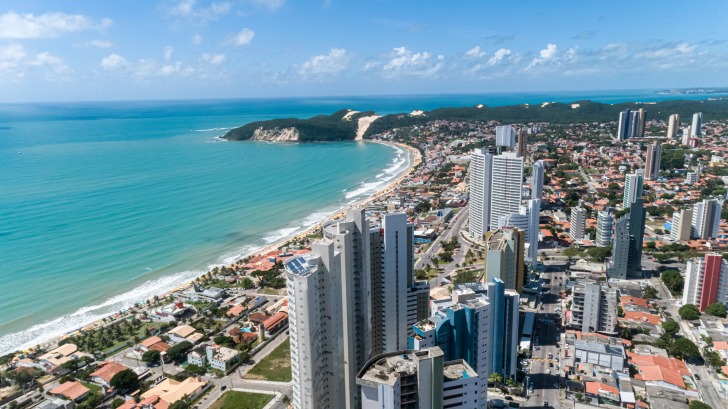
4. Natal, Brazil
Natal, a 423-year-old coastal city, has a population of roughly 900,000 residents.
It is s located in the north Brazilian state of Rio Grande Do Norte.
Unfortunately, it is another Brazilian city known for its high crime rate, with a danger score of 77.46.
And World crime data reports 74.67 violent deaths per 100,000 people.
Drug trafficking, robbery, and homicides are prevalent around Santarém and Rocas.
Its name Natal means Nativity or Christmas, and the famous nearby beach town of Pipa is a popular tourist destination.
There is safety in numbers throughout the city, and situational awareness is essential.
If you want to tour Natal, the safest area is Ponta Negra, the city’s business district.
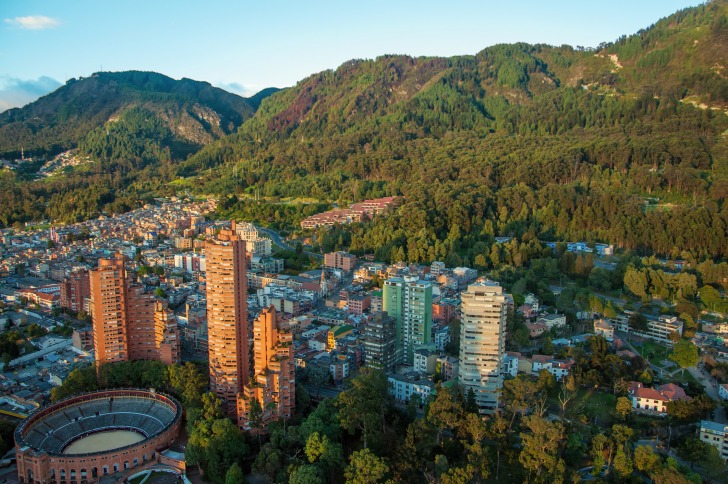
5. Bogota, Colombia
Colombia’s capital has over 7 million people and is one of the most dangerous South American cities, with murder rates hovering around 26.1 per 100,000.
Throughout the area, neighborhood boundaries change quickly, and robberies are pervasive day or night.
Bogota is notorious for drug trafficking and has two no-go zones – Suba and Santa Fe barrios. Another part of the city that is subject to high incidences of crime is the public bus system, TransMilenio.
It is overcrowded and a favorite spot for pickpockets.
If you want to tour Bogota, taxis or hired car services are the safest ways to see the city.
Walking in Bogota is not advised.
There are a few areas safe for tourists.
Upscale shopping and business districts like La Candelaria or Chapinero Alto are economic hubs with hotels, entertainment spaces, and post restaurants.
Another popular attraction is Usaquen, the city’s flea market.
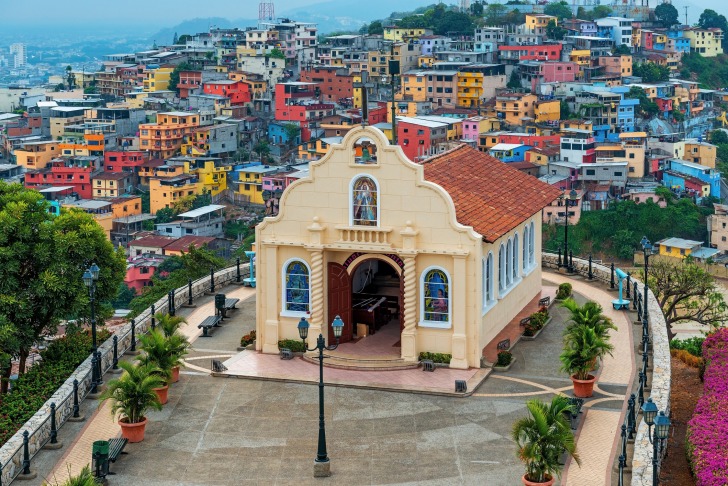
6. Guayaquil, Ecuador
Guayaquil sits along South America’s Pacific coast along the Rio Guayas.
It is Ecuador’s third-largest city, with 2.7 million people.
It is also the least safe because of pervasive and ongoing gang violence and drug trafficking.
The murder rate in Guayaquil continues to trend upward, with 25.9 homicides per 100,000.
This translates into a danger score of 71.96
But Guayaquil is not all danger.
The northern part of the city holds the country club and the Jardin Botanico, or Botanical Gardens.
Malecón 2000, a central tourist attraction on the riverbanks, sits near the Basílica Menor Católica Nuestra Señora de La Mercedo.
This area is popular with tourists and is home to upscale hotels and cafes.
The Malecon is popular during the day but dangerous at night or if you are alone.
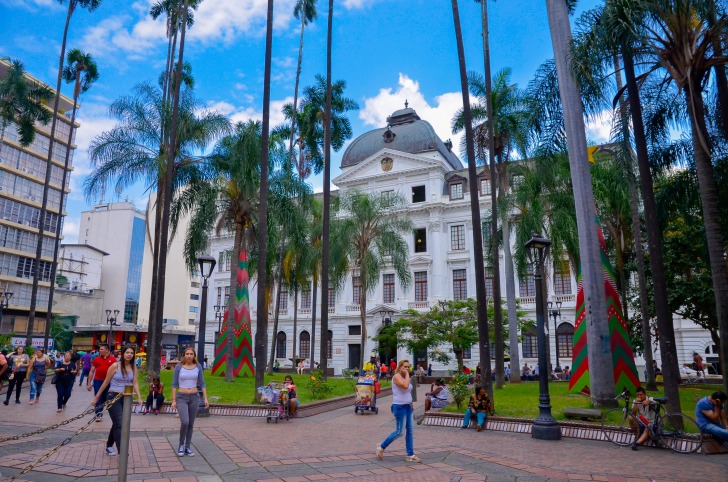
7. Cali, Colombia
Founded in 1536 and with a population of 2.5 million, Cali is one of the country’s oldest and most dangerous cities in Colombia.
Situated in the south of Bogata in the Valle de Cauca, it is consistently ranked for drug trafficking, homicides, and gang violence.
Because of the influence of the South American drug cartels, murders, and express kidnapping are common in the city’s center, supporting a danger score of 60.35.
And the Siloé and the Aguablanca district are known for robbery and theft.
When traveling to Cali, keep sight of your belongings and minimize what you carry to avoid attention.
Despite the danger, Cali is a unique city known for salsa dancing and the clubs of Juanchito.
Impressive 18th and 19th-century architecture and cathedrals are popular tourist attractions.
And surprisingly, there are five universities in Cali’s 239 square mile area.
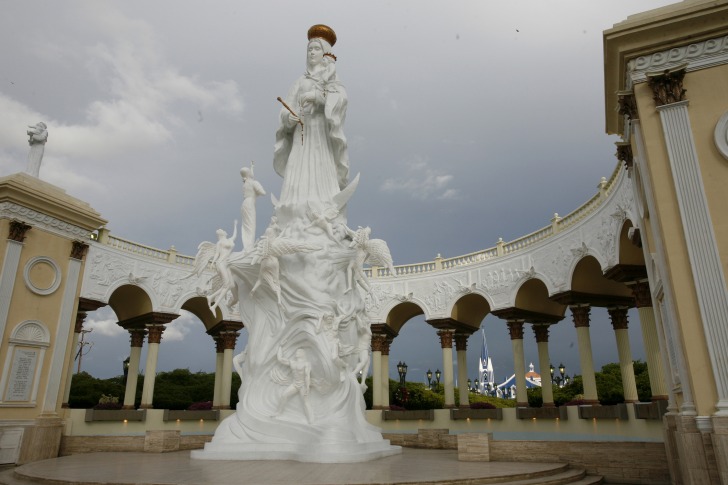
8. Maracaibo, Venezuela
MaraCaibo, founded in the 16th century, is located in western Venezuela, sharing a border with Colombia.
It sits on the straits near Lake Maracaibo and the Gulf of Venezuela.
It is home to roughly 2 million people. But With a danger score of 82.57, tourists rarely visit it.
In fact, Maracaibo is a known hub for drug traffickers, with high rates of kidnappings and homicides, especially in the barrios of Santa Lucía and La Chinita.
One of the safer areas is the central Plaza Bolívar, home to the Cristo Negro (Black Christ) statue.
Whether visiting in the winter in January or basking in the 87°F heat of August, sightseeing in Maracaibo is enjoyable if you stay in groups and know your surroundings.
It is also a good idea to minimize your belongings.
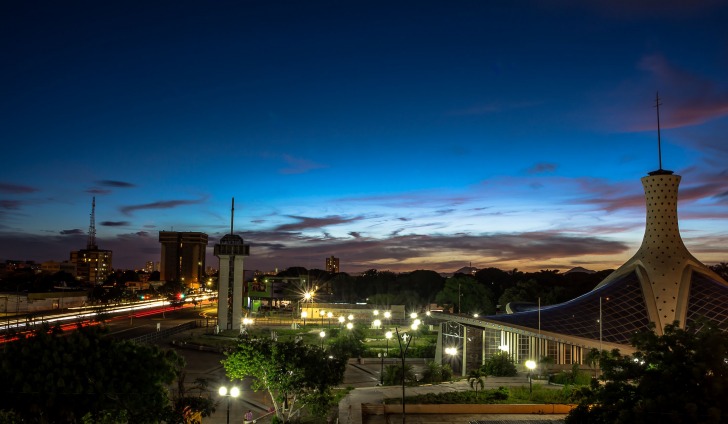
9. Barquisimeto, Venezuela
Located on the Turbio River in northwestern Venezuela, Barquisimeto sits roughly 360 km west of Caracas.
It is the capital of Lara state and an up-and-comer in crime statistics.
It has a crime index of 71.8, which translates into 28.1 homicides reported per 100,000.
Unfortunately, this modest inland city of 900,000 residents is quickly gaining a reputation for assault, robbery, and theft.
Touring Barquisimeto during the day is relatively safe if you stay on the west side near Pueblo Nuevo and the Metropolis Mall.
The central area holds several essential attractions, including the Barquisimeto Museum, Botanical Garden, and zoo.
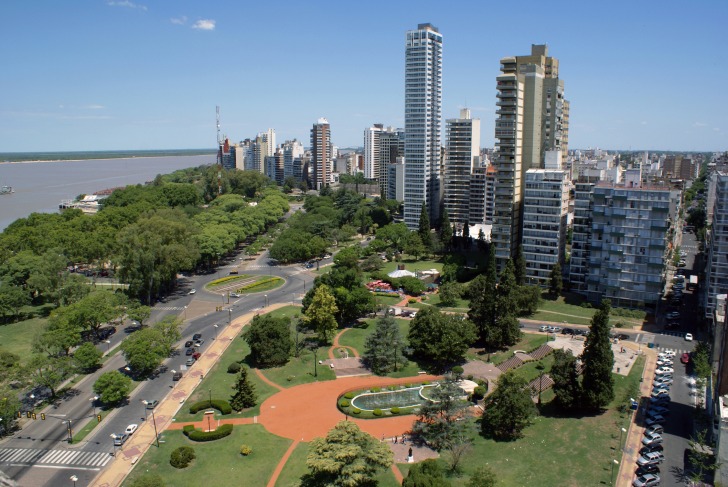
10. Rosario, Argentina
Rosario, a river port in Santa Fe province, is Argentina’s third largest city.
The moderately sized city is located on the east bank of the Parana River in east-central Argentina.
Rosario is home to roughly 1.5 million people, including Argentine footballer Leo Messi.
Rosario is a growing hub for students and artists.
Unfortunately, a criminal element complements the increase in tourists.
Ranking in South America’s top twenty with a crime index of 69.8, the most commonly reported crimes are petty theft and drug trafficking.
The focus on petty tourist-centric crime is supported by one of South America’s lowest homicide rates, 5.4 per 100,000 people.
In the outer areas, gang violence is also common in Rosario.
The modest city is home to several exquisite museums and monuments, including the Museum of Contemporary Art and the City Museum.
The National Flag Memorial, a mid-twentieth-century building, sits in the center of Memorial Square.
5 Safety Tips for Traveling to South America
Whether this is your first or 100th trip to South America, a few simple precautions can prioritize your safety as you explore this amazing continent.
Here are five safety tips to consider when traveling to South America:
- Avoid ATMs: Robbery or assault at public ATMs are real risks – day or night. Look for machines located within a bank or secure building.
- Skip the bling: South America has a high rate of pickpocketing and theft. Separate your money from your purse or wallet. Situational awareness is critical. Keep track of personal items, including backpacks, passports, wallets, and electronics.
- Use trusted transportation: Public transportation in South America can be unreliable, and taxis are not always safe. If you must use a ride service, use official stands, reputable tour companies, or pre-booked airport transfers.
- Put your phone away: If you have to use it for directions, step inside a building. This will help you stay alert while you are on the street. It is also a good idea to learn a few essential words in Spanish or Portuguese. At the very least, download a translation app or purchase an inexpensive translator.
- Prepare for emergencies: Keep digital and paper copies of your passport, travel insurance policies, embassy information, and local emergency numbers – including hotel contact information. It is also advised to carry a basic first aid kit, including sunscreen.
Travel is about new experiences and enjoying your surroundings.
Common sense will ensure a safe and enjoyable trip to South America.
Frequently Asked Questions
Is it safe to use public transportation in South America?
In general, yes.
But when booking pu
blic transportation anywhere in South America, use trusted companies and sites.
For safety, book taxis and local transport through the hotel.
Refuse any offer of a ride from unknown sources or someone that approaches you off the street.
Is South America on the Equator?
The northern part of South America is above the Equator.
The global dividing line passes through Ecuador, Colombia, and Brazil.
Three-fourths of the backward comma is located in a tropical zone, with the tip of South America just above subantarctic latitudes.
Is South America safe for solo travelers?
All of the countries in South America are generally safe for solo and female travelers.
However, some areas and activities should be avoided, such as jungle tours or walking alone, day or night.
Some more prevalent crimes throughout the continent are pickpockets, petty theft, and sexual harassment.
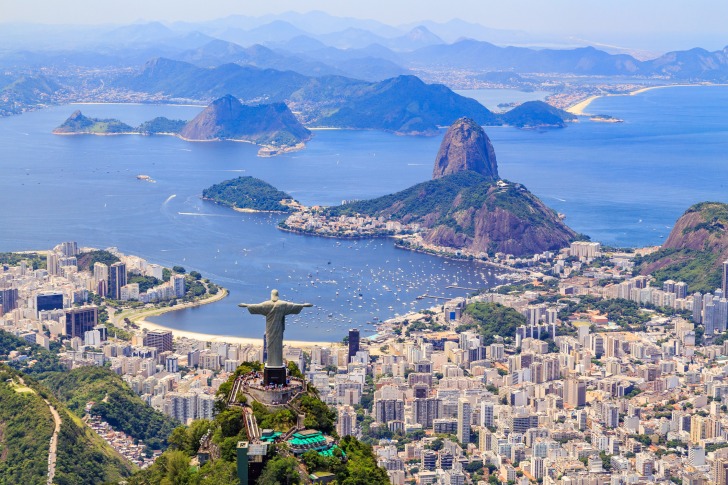
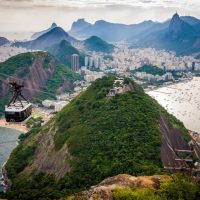
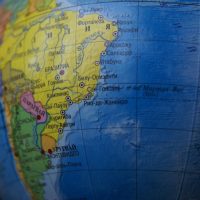

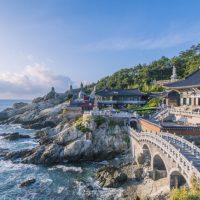

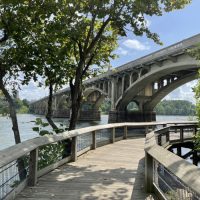





South America is a culturally rich and diverse continent, with stunning landscapes and unique experiences to offer.
However, it is essential to do your research and take precautions when traveling to certain areas.
By following these safety tips and staying aware of your surroundings, you can have a safe and enjoyable trip to South America.
By doing your research and taking necessary precautions while traveling, you can have an amazing experience exploring this unique part of the world.